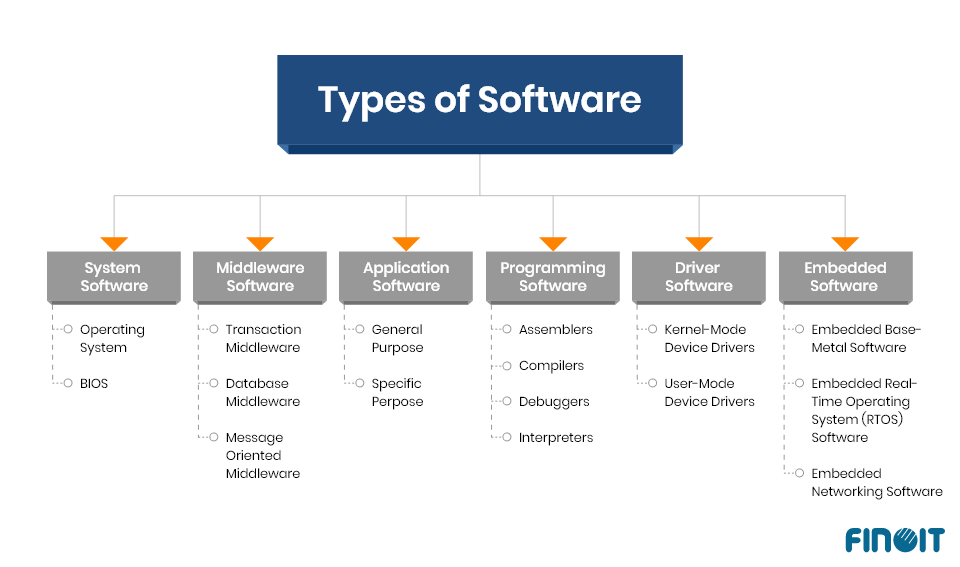When it comes to software, there are countless types and applications to choose from. However, amongst the myriad options, one question often lingers: which one is the most important? While it may seem like a mind-boggling puzzle, ponder no more. In this article, we will explore the significance of different software types and uncover the true jewel in the software crown. From productivity tools to operating systems, we will weigh the merits and explore how one particular type of software reigns supreme in its impact and indispensability. So buckle up and get ready to embark on an illuminating journey through the world of software.
Operating System Software
Definition and Function
Operating system software is a fundamental component of any computer system. It serves as a bridge between the hardware and the user, providing an interface for managing and utilizing computer resources efficiently. The operating system is responsible for managing tasks such as memory allocation, file management, input/output operations, and process scheduling. It plays a crucial role in ensuring the stable and secure operation of a computer system.
Role in Computer Operation
Operating systems are essential for the proper functioning of computer systems. They provide an interface through which users can interact with their devices, allowing them to execute programs, access files, and perform various tasks. The operating system acts as a mediator, translating user commands into instructions that the hardware can understand and execute. It also manages system resources, ensuring that different programs and processes can run simultaneously without conflicts.
Importance in Device Management
Operating systems play a critical role in managing computer devices and ensuring their optimal performance. They control and coordinate the utilization of hardware components such as processors, memory, storage devices, and input/output devices. By efficiently allocating these resources, operating systems enable smooth and efficient operation of applications and programs. Additionally, operating systems provide drivers and interfaces that allow external devices, such as printers and scanners, to be seamlessly integrated with the computer system.
Productivity Software
Applications and Features
Productivity software refers to a wide range of applications designed to enhance efficiency and organization in various tasks. Examples include word processors, spreadsheets, presentation software, and project management tools. These software applications provide features such as document creation and editing, data analysis and visualization, collaboration and communication tools, and task management capabilities. They are specifically designed to streamline workflows, improve productivity, and facilitate effective teamwork.
Enhancing Efficiency and Organization
Productivity software plays a vital role in enhancing efficiency and organization in both personal and professional settings. By providing tools for creating and managing documents, spreadsheets, and presentations, these applications enable users to complete tasks more quickly and effectively. They offer features such as templates, formatting options, automatic calculations, and data analysis tools, which simplify complex tasks and reduce manual effort. Furthermore, productivity software often includes collaboration features that allow multiple users to work on the same document simultaneously, increasing coordination and productivity.
Critical for Business Operations
Productivity software is particularly critical for businesses, as it forms the backbone of their day-to-day operations. Email clients, project management tools, and communication platforms enable smooth collaboration among team members, no matter their physical location. Word processing and spreadsheet software assist in creating professional documents and analyzing complex data. Presentation software helps deliver impactful and visually appealing presentations to clients and stakeholders. Without productivity software, businesses would struggle to manage their workflows, communicate effectively, and meet project deadlines.
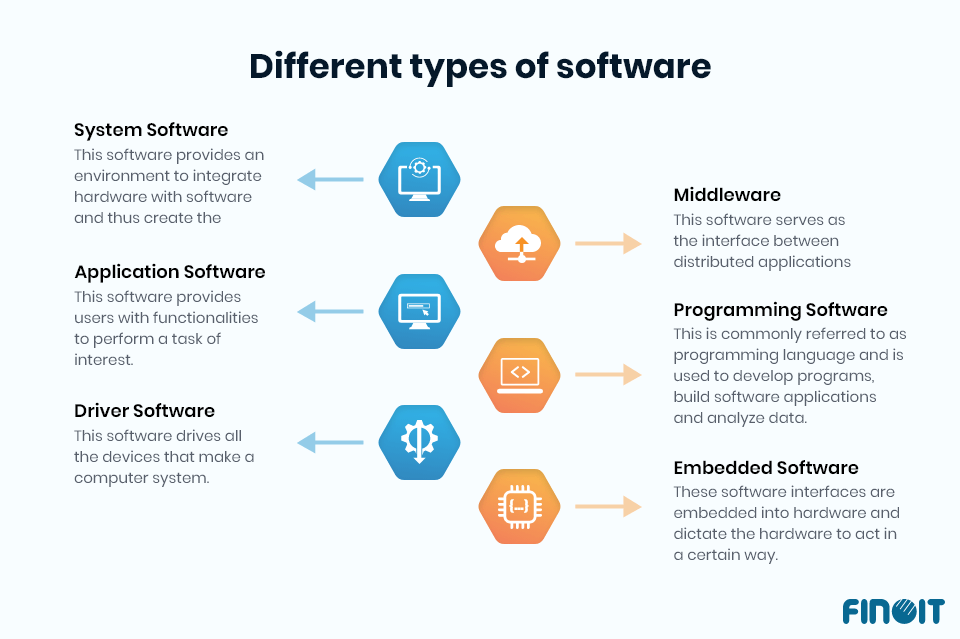
This image is property of www.finoit.com.
Security Software
Protecting against Malware and Cyber Attacks
Security software is designed to protect computer systems and networks from various threats, including malware, viruses, and cyber attacks. It includes antivirus programs, firewalls, intrusion detection systems, and encryption tools. These software applications constantly monitor system activities, detect and remove malicious software, and prevent unauthorized access to sensitive data. By regularly updating virus definitions and scanning for potential threats, security software acts as a barrier against cyber threats that can compromise the integrity and confidentiality of data.
Role in Data Privacy and Integrity
Security software plays a crucial role in maintaining data privacy and integrity. With the rising number of cyber threats, protecting sensitive information has become a top priority for individuals, businesses, and organizations. Encryption tools, for example, secure data by converting it into a code that is unreadable without the decryption key. Security software also safeguards against unauthorized access to confidential information by implementing multi-factor authentication and access control mechanisms. By preventing data breaches and protecting against unauthorized access, security software ensures that valuable data remains safe and secure.
Vital for Personal and Business Security
In today’s digital age, security software is vital for both personal and business security. Individuals rely on security software to safeguard their personal information, such as online banking credentials, social media accounts, and personal documents. Without effective security measures in place, individuals are at risk of falling victim to identity theft, financial fraud, or other forms of cybercrime. Similarly, businesses need robust security software to protect their customer data, financial records, trade secrets, and intellectual property. A single security breach can have severe consequences, including financial loss, reputational damage, and legal repercussions.
Database Management Software
Data Organization and Storage
Database management software is specifically designed to organize and store vast amounts of data efficiently. It provides a structured approach to manage and manipulate data, ensuring data integrity, security, and accessibility. Database systems use tables, rows, and columns to organize and store data in a structured and consistent manner. This allows for efficient storage, retrieval, and manipulation of data, regardless of its size or complexity.
Efficient Data Retrieval and Querying
Database management software enables efficient data retrieval and querying through the use of structured query language (SQL). SQL provides a standardized method for users to retrieve, insert, update, and delete data from databases. With the help of indexes, query optimization, and data indexing techniques, database management software allows for fast and accurate retrieval of data. This is particularly crucial for businesses that rely on real-time reporting, data analysis, and decision-making based on large datasets.
Critical for Data-Driven Decision Making
In the era of big data, database management software plays a critical role in enabling data-driven decision making. By providing a centralized repository for storing and organizing data, businesses can easily analyze, interpret, and visualize data to gain valuable insights. These insights can be used to make informed business decisions, identify trends, optimize operations, and target customers more effectively. Without database management software, businesses would struggle to manage and analyze the vast amounts of data generated daily, hindering their ability to make informed decisions and stay competitive.
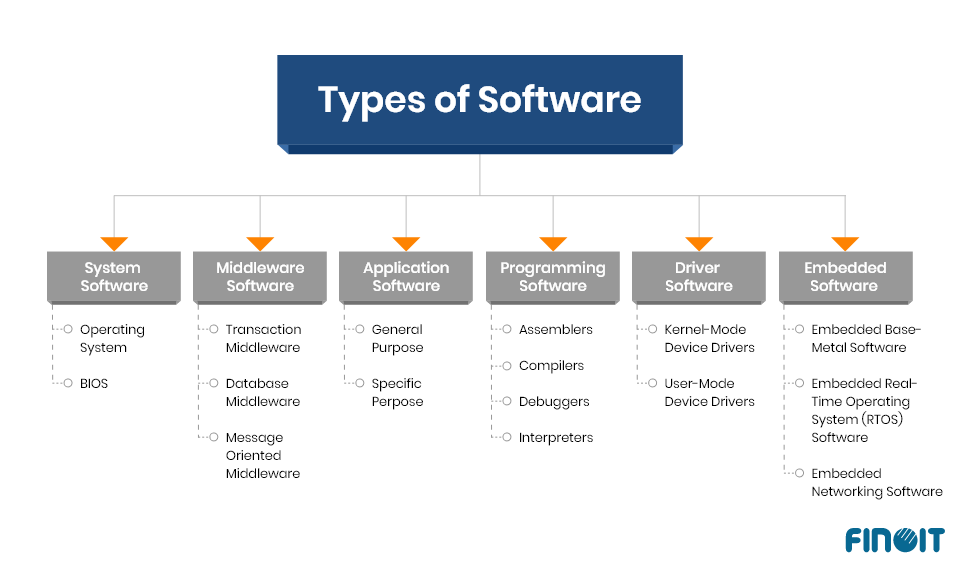
This image is property of www.finoit.com.
Network Software
Facilitating Connectivity and Communication
Network software plays a crucial role in facilitating connectivity and communication within and between computer networks. It enables devices to connect and communicate with each other, whether through wired or wireless connections. Network software includes protocols, drivers, and network management tools that ensure seamless data transfer, efficient resource sharing, and reliable communication across networks. It forms the foundation for various network services, such as file sharing, printing, email, and web browsing.
Managing Network Resources
Network software also helps manage and optimize network resources, such as bandwidth and network devices. Bandwidth management tools prioritize network traffic, ensuring that critical applications receive the necessary resources. Network monitoring software tracks network performance, identifies bottlenecks, and helps administrators optimize network configurations. Additionally, network security software protects networks from unauthorized access, malicious activities, and data breaches. By managing resources effectively and ensuring network security, network software enables efficient collaboration and information sharing.
Essential for Collaboration and Information Sharing
In today’s interconnected world, network software is essential for collaboration and information sharing. It allows users to communicate, share files, and access resources located on different devices and networks. Email clients, instant messaging applications, and video conferencing software enable seamless communication and collaboration among individuals and teams, regardless of their physical location. File sharing and cloud storage services enable users to access and share documents and files from any device with an internet connection. Network software enables businesses and individuals to collaborate, exchange information, and leverage resources more effectively.
Web Browsers
Basic Internet Navigation
Web browsers are software applications that allow users to access, navigate, and view information on the World Wide Web. They provide a graphical interface for users to browse websites, view web pages, and interact with online content. Web browsers interpret HTML, CSS, and JavaScript code to render web pages and enable interaction with web-based applications. Whether it’s searching for information, accessing websites, or conducting online transactions, web browsers are the primary tool for navigating the internet.
Access to Information and Online Services
Web browsers provide users with access to a vast amount of information and a wide range of online services. With just a few clicks, users can search for and retrieve information on any topic imaginable. Web browsers give users access to news websites, online encyclopedias, educational resources, and much more. Additionally, web browsers enable users to access online services, such as email, social media platforms, online banking, shopping, and entertainment platforms. Without web browsers, accessing and utilizing the vast resources available on the internet would be challenging and impractical.
Foundation of the World Wide Web
Web browsers are the foundation of the World Wide Web as we know it today. They allow users to navigate through interconnected web pages, click on hyperlinks, and access multimedia content. Web browsers are instrumental in rendering content in a visually appealing and user-friendly manner, ensuring that websites are accessible and usable by people of all skill levels. The continuous development and improvement of web browsers have been central to the evolution and growth of the internet, making it more accessible, interactive, and integrated into our daily lives.
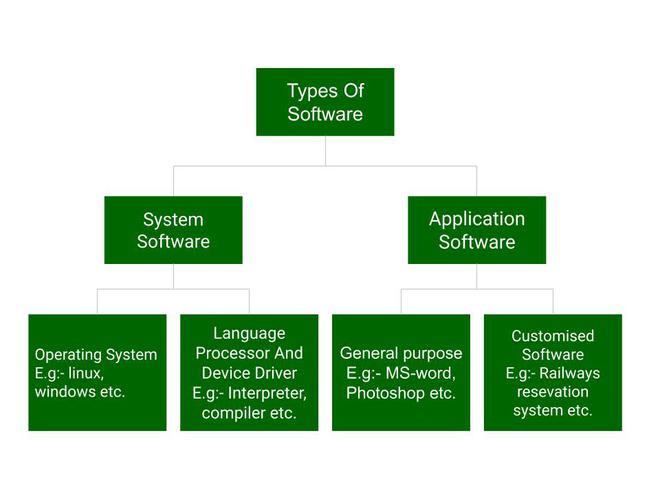
This image is property of media.geeksforgeeks.org.
Entertainment Software
Role in Leisure and Recreation
Entertainment software, often referred to as video games or interactive media, provides individuals with an escape from everyday life and offers a form of leisure and recreation. These software applications allow users to immerse themselves in virtual worlds, assume different roles, and experience thrilling adventures. From puzzle-solving games to action-packed multiplayer experiences, entertainment software caters to a wide range of interests, preferences, and age groups. It provides an enjoyable and engaging means of entertainment and relaxation.
Gaming and Interactive Media
Gaming is the most prominent form of entertainment software, offering immersive and interactive experiences. Video games combine elements of storytelling, strategy, skill, and competition to engage players and provide hours of enjoyment. With advancements in graphics, sound, and gameplay technology, modern games offer stunning visuals, realistic simulations, and engaging narratives. Additionally, entertainment software includes interactive media applications, such as virtual reality experiences and augmented reality games, that push the boundaries of immersion and interactivity.
Creativity and Inspiration
Entertainment software also plays a role in fostering creativity and inspiration. Many games provide players with tools and platforms to create and share their content, such as user-generated levels, mods, and game modifications. These creative outlets allow players to express themselves, experiment with game design, and collaborate with others in a digital environment. Moreover, entertainment software can spark inspiration and stimulate imaginative thinking through its compelling stories, vivid graphics, and innovative gameplay mechanics. It provides a platform for storytelling, artistic expression, and exploration.
Graphic Design Software
Visual Communication and Creation
Graphic design software is specifically designed to create, manipulate, and enhance visual elements for various purposes. It provides tools and features for creating and editing digital images, illustrations, logos, and other graphical assets. Graphic design software allows users to apply various effects, filters, and transformations to enhance the visual appeal and impact of their designs. Whether it’s designing a website, creating marketing materials, or producing digital artwork, graphic design software empowers users to communicate visually and create captivating visual content.
Professional Design and Marketing
Graphic design software is particularly critical for professionals in the design and marketing fields. It provides the necessary tools and features to create visually appealing and impactful designs for branding, advertising, and communication purposes. Graphic designers rely on software applications such as Adobe Photoshop, Illustrator, and InDesign to bring their creative visions to life. These applications offer advanced features for image editing, vector graphics creation, typography, and layout design. Graphic design software enables professionals to produce high-quality designs that effectively convey messages, engage audiences, and enhance brand identity.
Enhances Visual Appeal and Impact
Graphic design software plays a significant role in enhancing the visual appeal and impact of various media. Websites, advertisements, packaging, and social media content rely heavily on visually striking designs to capture attention and leave a lasting impression. With graphic design software, designers can create visually coherent and aesthetically pleasing designs by utilizing color theory, typography, composition techniques, and visual hierarchy. These designs not only attract viewers but also communicate information effectively and convey desired emotions or messages.

This image is property of www.finoit.com.
Mobile Apps
Functionality and Convenience on Mobile Devices
Mobile apps are software applications designed specifically for use on mobile devices, such as smartphones and tablets. They offer a wide range of functionalities and services that enhance convenience, efficiency, and connectivity on the go. Mobile apps cater to various needs and interests, including communication, productivity, social networking, entertainment, health, and finance. Whether it’s checking emails, managing tasks, ordering food, or tracking fitness goals, mobile apps provide users with instant access to services and information, allowing them to complete tasks and stay connected wherever they are.
Expanding Mobile Capabilities
Mobile apps have revolutionized the capabilities of mobile devices, transforming them into powerful tools for personal and professional use. Mobile apps leverage the inherent features of mobile devices, such as GPS, cameras, accelerometers, and touch screens, to provide unique and innovative functionalities. They enable users to navigate with GPS, capture and edit photos and videos, monitor health and fitness, perform mobile banking transactions, and much more. Mobile apps expand the possibilities of what mobile devices can do, turning them into versatile and indispensable tools for everyday life.
Revolutionizing Industries
Mobile apps have had a profound impact on various industries, transforming the way businesses operate and how individuals access services. From ride-sharing apps that have disrupted the transportation industry to mobile banking apps that have revolutionized financial services, mobile apps have reshaped traditional business models and customer experiences. Additionally, mobile gaming apps have grown into a massive industry, generating billions of dollars in revenue and captivating millions of players worldwide. Mobile apps have the potential to disrupt and revolutionize industries by providing innovative solutions and improving accessibility and convenience for users.
Conclusion
Subjective Nature of Importance
Determining the most important type of software is subjective and dependent on individual needs, interests, and contexts. Each type of software plays a unique and crucial role in different aspects of computer usage, productivity, security, and entertainment. What may be essential for one person or industry may not be as important to another. Therefore, it is essential to consider the specific requirements, goals, and priorities when evaluating the importance of software types.
Interdependencies among Software Types
Different types of software are interconnected and often rely on each other to function effectively. For example, operating systems serve as a foundation for running and managing other software applications. Productivity software relies on operating systems to provide a stable and secure environment for its functionalities. Security software protects the integrity and confidentiality of data stored and processed by other software applications. Recognizing these interdependencies highlights the importance of a well-rounded software ecosystem.
Role of User Requirements
Ultimately, the importance of software types is determined by user requirements and intended use. Individuals, businesses, and organizations have distinct needs and objectives, influencing the software they prioritize. For some, security software may be of utmost importance, while others may focus on productivity tools or entertainment software. Understanding user requirements and aligning them with the appropriate software types is crucial to maximizing the benefits and impact of software in various contexts.
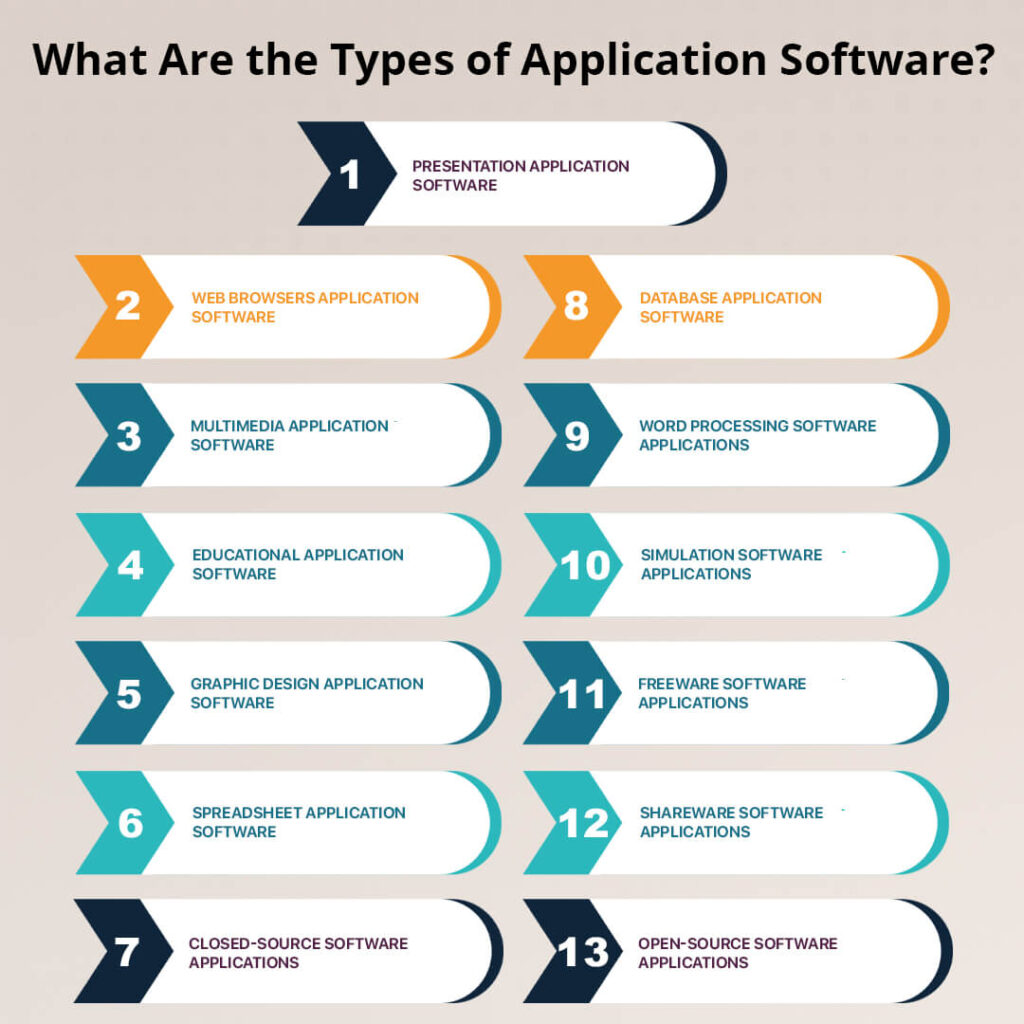
This image is property of www.hyperlinkinfosystem.com.
